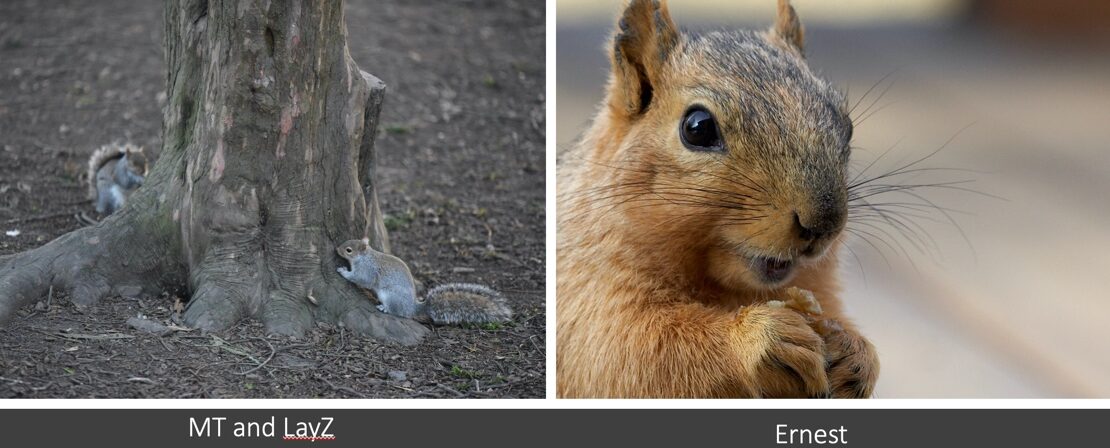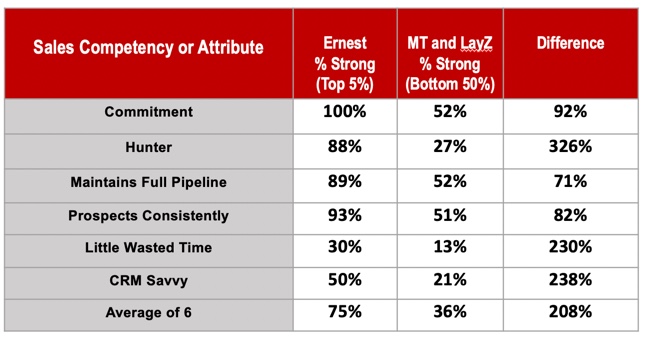- October 28, 2019
- Posted by: Dave Kurlan
- Category: Understanding the Sales Force

It was rainy and cool so the leaves are dropping from the trees, the peak color has passed and it’s time to focus on something else.
Speaking of focus, this morning I was watching 3 squirrels, each doing their thing, which made a perfect analogy for the differences between top and bottom salespeople.
Squirrel #1, who I named Ernest, was finding lots of nuts and burying them. His nest was full and he will reap the benefits of his hard work over the winter.
Squirrels #2 and #3, who I named MT and LayZ, were playing. They were running up and down tree trunks, jumping from limb to limb, running in circles and generally chasing their tails. They don’t yet have nests and unless they make a commitment, become disciplined, and get to work, they will starve to death this winter.
Ernest, MT and LayZ are no different than their human counterparts who find themselves in sales roles. The top salespeople are like Ernest and the bottom salespeople are like MT and LayZ. For evidence of that claim, take a look at the table below with a sprinkling of data from Objective Management Group (OMG) which has evaluated 2.4 million salespeople from close to 36,000 companies.

Ernest would be an Elite salesperson. Elites make up the top 5% of all salespeople. MT and LayZ would be weak salespeople who make up the bottom 50% of all salespeople. As you can see from the 6 findings I included in the table, elite salespeople like Ernest are 208% stronger than weak salespeople like MT and LayZ.
The 2 findings most consistent with Ernest’s focus and discipline are Commitment and Prospects Consistently, where Ernest is 92% and 82% stronger than MT and LayZ.
Even more importantly, Ernest is 326% stronger in the Hunter Competency. The Hunter, and Commitment to Sales Success, are two of the 21 Sales Core Competencies that OMG measures. The other four findings listed above are all attributes of the Hunter Competency.
No matter how much selling evolves and how many complimentary selling tools become available, one thing will always remain constant. B2B sales requires a full pipeline and a pipeline that yields results is built from a consistent prospecting effort, born from commitment and discipline.
With or without leads, a BDR team, or outsourced appointment setting, it is a salesperson’s responsibility to be sure that the pipeline always has the 3 F’s:
- Full (consistent daily effort to keep the pipeline full)
- Filled (qualified opportunities in the pipeline, lesser ones out)
- Fluid (opportunities in, opportunities moving and opportunities closed or archived)
Most salespeople don’t even know the threshold for a full pipeline. It’s the number of opportunities required to sell one multiplied by the number that must be closed. It doesn’t matter if it’s one account, one order, or one contract as long as the same definition is applied universally throughout the pipeline. Additionally, the number required to sell one is not the number of proposals required to sell one. It’s more like this (if you close 33% of your proposals):
- Closed: 1
- Proposals Required (Closable): 3
- Qualified Opportunities: 4
- Opportunities with Compelling Reasons to Buy (Prospects): 6
- New Opportunities (Suspects): 8
You can see that the typical pipeline requires 21, not 3 opportunities to sell 1, .
Don’t be MT or LayZ. Be Ernest with your pipeline building efforts.
Images Copyright iStock Photos MT and LayZ, and Ernest
